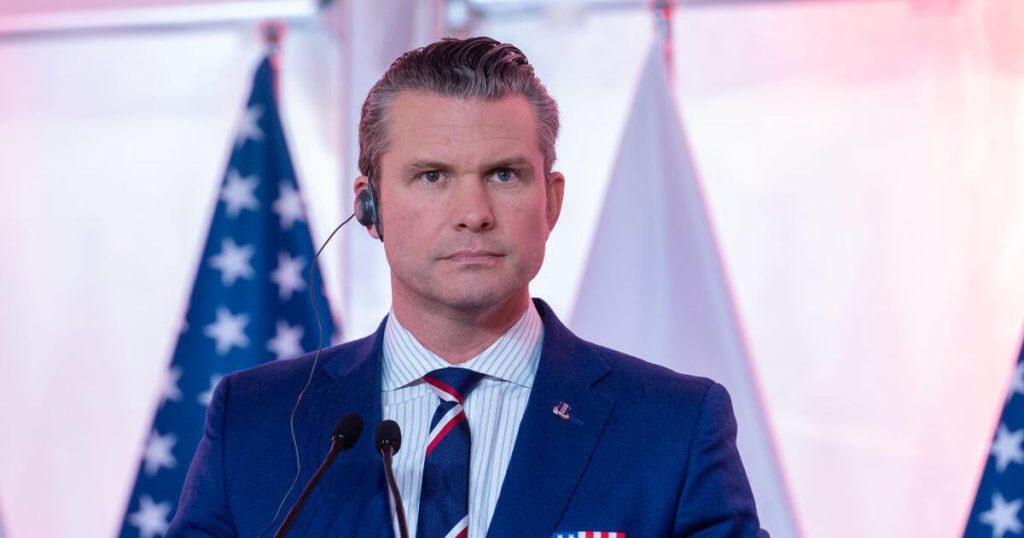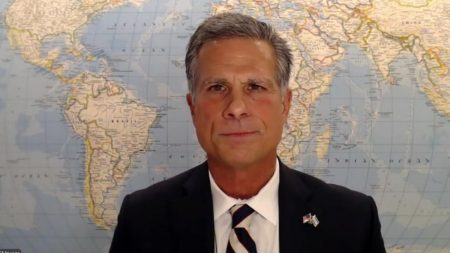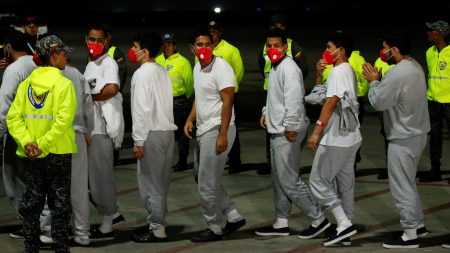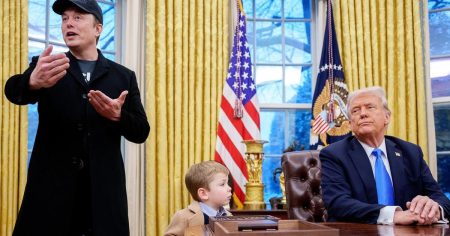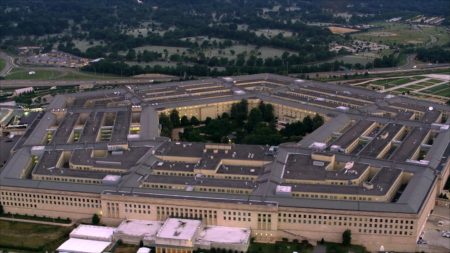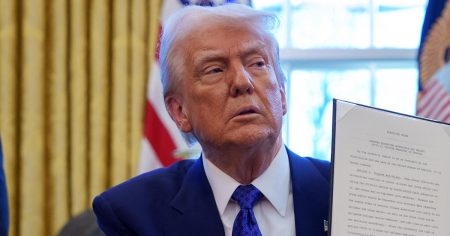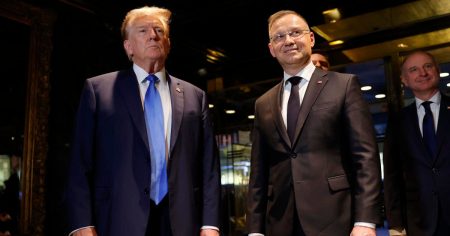Major Job Cuts and Hiring Freeze Announced by the Defense Department
The U.S. Department of Defense (DoD) made a significant announcement on Friday, revealing plans to cut approximately 5,400 probationary workers starting next week. In addition to these layoffs, the department will implement a hiring freeze as part of a broader effort to streamline operations and align resources with President Trump’s priorities. This move follows a visit by staffers from the Department of Government Efficiency (DOGE) to the Pentagon earlier in the week, where they received lists of probationary employees who would be affected by the cuts. Notably, uniformed military personnel were exempt from these reductions, as they are protected under separate policies. Probationary employees, typically those who have been on the job for less than a year and have not yet gained civil service protection, are the primary targets of this workforce reduction.
Acting Undersecretary of Defense for Personnel and Readiness, Darin Selnick, stated that the department anticipates reducing its civilian workforce by 5-8% to achieve greater efficiencies and refocus on the President’s agenda, which includes restoring military readiness. This decision is part of a larger strategy to prioritize warfighting capabilities over bureaucratic excess, a theme that has been echoed by Defense Secretary Pete Hegseth. Hegseth has been vocal about the need to "cut the fat" within the Pentagon’s headquarters while "growing the muscle" of the military’s combat forces. He has directed the department to develop plans to cut 8% of the defense budget annually over the next five years, according to sources familiar with his plans.
Thousands of Federal Workers Face Layoffs Across Agencies
The layoffs at the DoD are part of a broader trend across the federal government under the Trump administration, which has been systematically reducing the number of federal workers with fewer civil service protections. In recent weeks, thousands of probationary employees across various federal agencies have been terminated. For instance, federal health agencies saw mass layoffs of probationary workers last weekend, while the Internal Revenue Service (IRS) is expected to terminate more than 6,000 employees by the end of this week, according to a source familiar with the agency’s plans. These cuts are part of a coordinated effort to shrink the federal workforce and reduce spending on what the administration describes as unnecessary programs.
The DoD, as the largest government agency, employs over 700,000 full-time civilian workers, according to a 2023 report by the Government Accountability Office (GAO). The decision to cut 5,400 probationary positions represents a small but significant fraction of this workforce. However, the cumulative impact of these layoffs across multiple agencies underscores the administration’s commitment to downsizing the federal bureaucracy. The cuts are also part of a broader shift in priorities, with the administration seeking to redirect resources toward areas it deems more critical, such as military readiness and presidential initiatives.
Pentagon Targets $50 Billion in Budget Cuts
In line with the administration’s goal of streamlining the defense budget, Defense Secretary Hegseth has instructed the military services to identify $50 billion in programs that could be cut next year. These cuts would free up resources to fund President Trump’s priorities, which include strengthening the military’s warfighting capabilities and eliminating what the administration describes as wasteful or ideologically driven spending. Robert Salesses, who is performing the duties of deputy secretary of defense, emphasized that these reductions will allow the DoD to "once again resource warfighting and cease unnecessary spending that set our military back under the previous administration."
Specifically, the administration has targeted programs related to climate change and other initiatives it labels as "woke" or politically motivated. Additionally, the Pentagon aims to reduce excessive bureaucracy, which it believes has hindered military effectiveness. By cutting 8% of the military’s budget—approximately $50 billion—next year, the DoD hopes to redirect these funds toward priorities that align with the administration’s vision for a more agile and combat-ready military.
Leadership Shake-Up at the Pentagon
The announcement of job cuts coincided with a significant leadership shake-up at the Pentagon. On Friday, President Trump announced the firing of Air Force Gen. Charles Q. Brown as chairman of the Joint Chiefs of Staff, the nation’s highest-ranking military officer. Brown, who was the second Black chairman in U.S. history, was ousted after serving in the role since 2021. He will be replaced by retired Air Force Lt. Gen. Dan "Razin" Caine, whom Trump nominated for the position.
In addition to Brown’s dismissal, Defense Secretary Hegseth announced the firing of two other senior military leaders: Chief of Naval Operations Lisa Franchetti and Vice Chief of Staff of the Air Force James Slife. Franchetti, who was the first woman to lead the Navy, and Brown, a groundbreaking figure for diversity in the military, were both let go as part of this leadership overhaul. The exact reasons for their dismissals were not fully detailed, but they appear to be part of a broader effort to reshape the military’s leadership structure under the Trump administration.
Implications and Controversies of the Cuts
The layoffs and leadership changes at the DoD have sparked significant debate about their implications for military readiness, employee morale, and the long-term health of the federal workforce. Critics argue that cutting thousands of civilian jobs, particularly among probationary workers who are still gaining experience, could undermine the department’s ability to function effectively. Civilian employees play a critical role in supporting military operations, from logistics and maintenance to research and development. Reducing their numbers could create gaps in expertise and capacity, potentially hampering the very readiness the administration seeks to restore.
Moreover, the targeting of programs related to climate change and other Initiatives has drawn criticism from advocates who argue that these efforts are essential to addressing global security challenges. By cutting these programs, the administration may be compromising the military’s ability to adapt to emerging threats and maintain its technological edge. The controversy over these cuts highlights the tension between the administration’s priorities and the need for a comprehensive approach to national security.
Conclusion: A New Era of Military and Federal Restructuring
The combination of job cuts, budget reductions, and leadership changes marks the beginning of a new era of restructuring within the Department of Defense and the broader federal government. While the administration argues that these measures are necessary to restore military readiness and eliminate wasteful spending, critics warn that they could have far-reaching consequences for the effectiveness and morale of the federal workforce. As the DoD moves forward with its plans to cut 5,400 probationary workers and implement a hiring freeze, the impact on both the military and civilian employees will be closely watched.
The leadership shake-up adds another layer of complexity to this transformation, as new leaders take the helm during a time of significant change. Whether these moves will achieve the administration’s goals of strengthening the military and reducing bureaucracy remains to be seen. One thing is certain, however: the DoD and the federal government are entering a period of significant upheaval, with profound implications for employees, national security, and the future of government operations.





